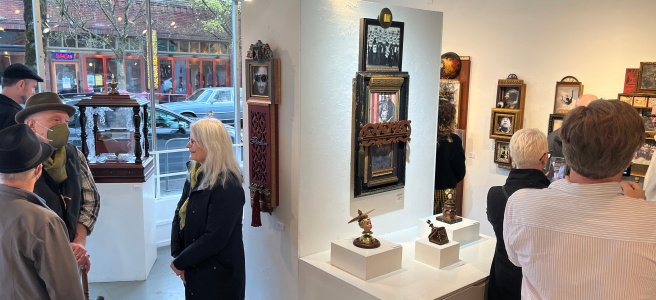As we move through life, we collect things—objects, memories, and sometimes they are connected. These things may be tied to personal events, or they may serve as markers of larger historical occurrences. In some cases, the objects themselves lose their connection to the memories they once held. However, certain materials—through art—can help us reforge these connections. For an artist, assemblage art offers a powerful means of expressing these ties between things, memories, and the passage of time.
The medium has been used throughout the 20th century. Pablo Picasso and Georges Braque used elements of collage and found objects in their works, and in the 1950s and 1960s artists like Robert Rauschenberg and Jasper Johns were pivotal in the evolution of assemblage. Louise Nevelson used it as a way to build architectural grandeur from the mundane and Joseph Cornell created intricate shadow boxes filled with found objects, creating dreamlike and poetic compositions. On these pages, we’ve also covered the work of the late David McManaway.

Today, two Portland-based artists—Dan Pillers and Richard Rolfe—bring new dimensions to assemblage art in their current show at Guardino Gallery. The work is on display in the main gallery, with Dan’s work largely filling the center areas and Richard’s adorning the walls.
While Dan had a show at Guardino in the last year or so, this was the first time Richard’s assemblage work has been on display publicly.
Dan uses a lot of found wooden objects and other items, often in a built case behind glass with various acid etching on it. One piece taking center stage, Serenity, hung from the ceiling and occasionally swayed ever so slightly like a pendulum. Dan asked if we had a place for it. The answer unfortunately is no, but it came out as “it might pull the ceiling down.” While he said it was not that heavy, I did note it was hung by a chain meant to hold multiple times its weight and attached to a square of plywood in the ceiling rather than to the plasterboard.

Another work, Birds of a Feather encases a feather inside a glass case as if to solemnly show something that once took flight has been confined eternally to being still.

Most of Dan’s work is masculine and weighty, involving crafts that demand a degree of certainty, like woodworking, metalwork and etching. One work in particular seemed to break out of this mold, however. Made of clock parts and other objects, the Gathering, is delicately assembled inside an etched glass dome. It seems to be a reminder that we are all together in a space and time, and that is a time those before and after us can’t fully comprehend.
Richard’s themes are as varied as his career. From a set designer to an interior designer, shop owner and even a run for political office, these roles speak to us through his work. His ten-year stint as a theater set designer early in his career has a disproportionately large impact on his art. “I just love the magical moment when light goes on and curtains go up.” he revealed at the opening Friday, March 27. Of the material he used, he has “hoarded” many prints over the decades. “Oh, I am 75 now. I have a lot of them!”

His works call on a collection of ephemera for characters in his sculptural plays. One piece, The Boys’ Box of Adventure, even incorporates stage doors that slide to reveal a variety of scenes. Using encaustic techniques, he applies layers of wax over printed images, creating a matte yet translucent surface. Others, like The Consequences of Falling, feature additional textures and beads to add dimension to the artwork.
These works deal with a variety of topics including Climate Change or make historical references like the Dream and My Old Friend Bobby. The Consequences of Falling has beeswax built up over the print with beads added to provide a three dimensional effect. A hand with a diagram showing an analysis of the folds in your palm may indicate the falling may be in your stars not in yourself. And so might be the practice of creating assemblage art once you get started.
You can see most of the works online at https://guardinogallery.com/ or in person at 2939 NE Alberta St in Portland.
Listen to this article.
Discover more from Urban Art & Antiques
Subscribe to get the latest posts sent to your email.



Thanks for this thoughtful review. I truly appreciate it.
LikeLike